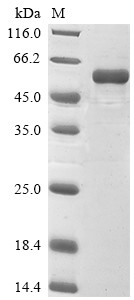Cookie preferences
This website uses cookies, which are necessary for the technical operation of the website and are always set. Other cookies, which increase the comfort when using this website, are used for direct advertising or to facilitate interaction with other websites and social networks, are only set with your consent.
Configuration
Technically required
These cookies are necessary for the basic functions of the shop.
"Allow all cookies" cookie
"Decline all cookies" cookie
CSRF token
Cookie preferences
Currency change
Customer-specific caching
FACT-Finder tracking
Individual prices
Selected shop
Session
Comfort functions
These cookies are used to make the shopping experience even more appealing, for example for the recognition of the visitor.
Note
Show the facebook fanpage in the right blod sidebar
Statistics & Tracking
Affiliate program
Conversion and usertracking via Google Tag Manager
Track device being used

If you have any questions, please use our Contact Form.
You can also order by e-mail: info@biomol.com
Larger quantity required? Request bulk
You can also order by e-mail: info@biomol.com
Larger quantity required? Request bulk
Organism: Rattus norvegicus (Rat). Source: E.coli. Expression Region: 1-465aa. Protein Length:... more
Product information "E3 ubiquitin-protein ligase parkin (Park2), rat, recombinant"
Organism: Rattus norvegicus (Rat). Source: E.coli. Expression Region: 1-465aa. Protein Length: Full Length. Tag Info: N-terminal 10xHis-tagged and C-terminal Myc-tagged. Target Protein Sequence: MIVFVRFNSS YGFPVEVDSD TSIFQLKEVV AKRQGVPADQ LRVIFAGKEL QNHLTVQNCD LEQQSIVHIV QRPQRKSHET NASGGDKPQS TPEGSIWEPR SLTRVDLSSH ILPADSVGLA VILDTDSKSD SEAARGPEAK PTYHSFFVYC KGPCHKVQPG KLRVQCGTCR QATLTLAQGP SCWDDVLIPN RMSGECQSPD CPGTRAEFFF KCGAHPTSDK DTSVALNLIT NNSRSIPCIA CTDVRNPVLV FQCNHRHVIC LDCFHLYCVT RLNDRQFVHD AQLGYSLPCV AGCPNSLIKE LHHFRILGEE QYNRYQQYGA EECVLQMGGV LCPRPGCGAG LLPEQGQKKV TCEGGNGLGC GFVFCRDCKE AYHEGECDSM FEASGATSQA YRVDQRAAEQ ARWEEASKET IKKTTKPCPR CNVPIEKNGG CMHMKCPQPQ CKLEWCWNCG CEWNRACMGD HWFDV. Purity: Greater than 90% as determined by SDS-PAGE. Endotoxin: Not test. Biological Activity: n/a. Form: Liquid or Lyophilized powder. Buffer: If the delivery form is liquid, the default storage buffer is Tris/PBS-based buffer, 5%-50% glycerol. If the delivery form is lyophilized powder, the buffer before lyophilization is Tris/PBS-based buffer, 6% Trehalose, pH 8.0. Reconstitution: We recommend that this vial be briefly centrifuged prior to opening to bring the contents to the bottom. Please reconstitute protein in deionized sterile water to a concentration of 0.1-1.0 mg/mL.We recommend to add 5-50% of glycerol (final concentration) and aliquot for long-term storage at -20 °C/-80 °C. Our default final concentration of glycerol is 50%. Customers could use it as reference. Storage: The shelf life is related to many factors, storage state, buffer ingredients, storage temperature and the stability of the protein itself. Generally, the shelf life of liquid form is 6 months at -20 °C/-80 °C. The shelf life of lyophilized form is 12 months at -20 °C/-80 °C. Notes: Repeated freezing and thawing is not recommended. Store working aliquots at 4 °C for up to one week. Relevance: Functions within a multiprotein E3 ubiquitin ligase complex, catalyzing the covalent attachment of ubiquitin moieties onto substrate proteins, such as BCL2, SYT11, CCNE1, GPR37, RHOT1/MIRO1, MFN1, MFN2, STUB1, SNCAIP, SEPT5, TOMM20, USP30, ZNF746 and AIMP2. Mediates monoubiquitination as well as 'Lys-6', 'Lys-11', 'Lys-48'-linked and 'Lys-63'-linked polyubiquitination of substrates depending on the context. Participates in the removal and/or detoxification of abnormally folded or damaged protein by mediating 'Lys-63'-linked polyubiquitination of misfolded proteins such as PARK7: 'Lys-63'-linked polyubiquitinated misfolded proteins are then recognized by HDAC6, leading to their recruitment to aggresomes, followed by degradation. Mediates 'Lys-63'-linked polyubiquitination of a 22 kDa O-linked glycosylated isoform of SNCAIP, possibly playing a role in Lewy-body formation. Mediates monoubiquitination of BCL2, thereby acting as a positive regulator of autophagy. Promotes the autophagic degradation of dysfunctional depolarized mitochondria by promoting the ubiquitination of mitochondrial proteins such as TOMM20, RHOT1/MIRO1 and USP30. Preferentially assembles 'Lys-6'-, 'Lys-11'- and 'Lys-63'-linked polyubiquitin chains following mitochondrial damage, leading to mitophagy. Mediates 'Lys-48'-linked polyubiquitination of ZNF746, followed by degradation of ZNF746 by the proteasome, possibly playing a role in the regulation of neuron death. Limits the production of reactive oxygen species (ROS). Regulates cyclin-E during neuronal apoptosis. In collaboration with CHPF isoform 2, may enhance cell viability and protect cells from oxidative stress. Independently of its ubiquitin ligase activity, protects from apoptosis by the transcriptional repression of p53/TP53. May protect neurons against alpha synuclein toxicity, proteasomal dysfunction, GPR37 accumulation, and kainate-induced excitotoxicity. May play a role in controlling neurotransmitter trafficking at the presynaptic terminal and in calcium-dependent exocytosis. May represent a tumor suppressor gene.By similarity Catalytic activityi. Reference: "Cloning of rat parkin cDNA and distribution of parkin in rat brain." Gu W.-J., Abbas N., Lagunes M.Z., Parent A., Pradier L., Bohme G.A., Agid Y., Hirsch E.C., Raisman-Vozari R., Brice A. J. Neurochem. 74:1773-1776(2000). Function: nan
| Keywords: | E3 ubiquitin-protein ligase parkin, Parkin RBR E3 ubiquitin-protein ligase, Recombinant Rat E3 ubiquitin-protein ligase parkin (Park2) |
| Supplier: | Cusabio |
| Supplier-Nr: | EP864348RAb1 |
Properties
| Application: | Activity not tested |
| Conjugate: | No |
| Host: | E.coli |
| Species reactivity: | rat |
| MW: | 56.7 kD |
| Purity: | >90% (SDS-PAGE) |
Database Information
| KEGG ID : | K04556 | Matching products |
| UniProt ID : | Q9JK66 | Matching products |
| Gene ID : | GeneID 56816 | Matching products |
Handling & Safety
| Storage: | -20°C |
| Shipping: | +4°C (International: +4°C) |
Caution
Our products are for laboratory research use only: Not for administration to humans!
Our products are for laboratory research use only: Not for administration to humans!
You will get a certificate here
Viewed

